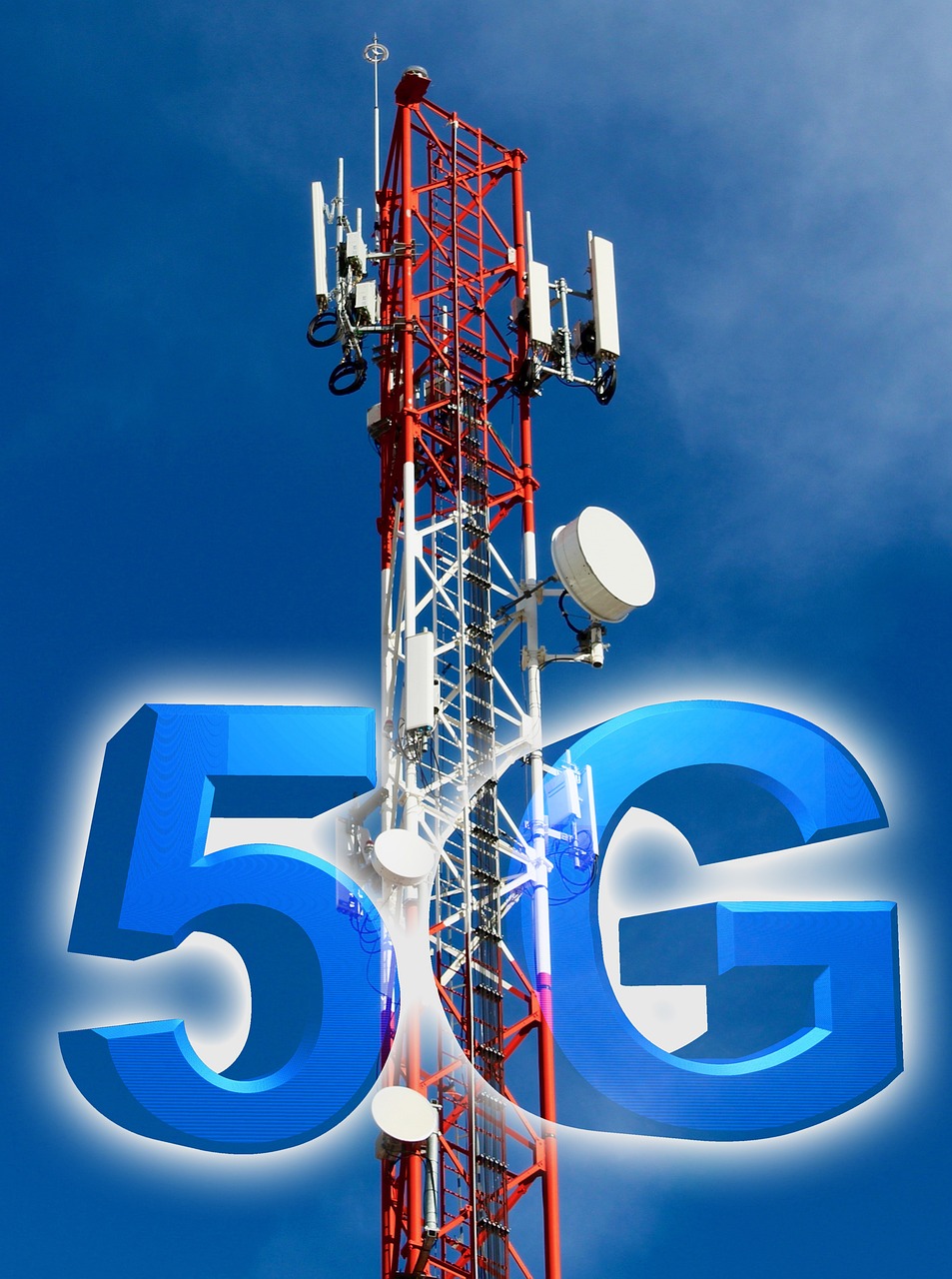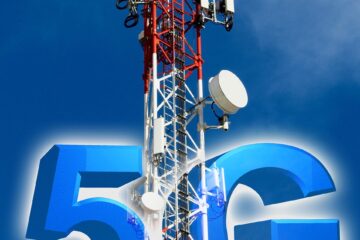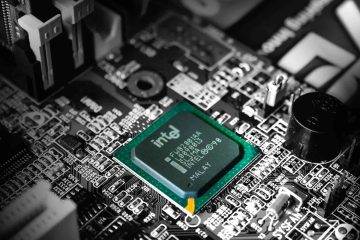5G Building Blocks: The Core Components of the Network
The fifth generation of wireless technology, commonly known as 5G, is set to revolutionize mobile communications and the way we connect to the internet. With its promise of faster data rates, lower latency, and greater capacity in the GHz frequency bands, 5G will enable a range of new applications and services that were previously impossible.
At the core of this technology are the building blocks that make up the network. These building blocks include hardware, software and infrastructure, each playing a crucial role in delivering high-speed, low-latency connectivity. The base station is an essential component for mobile communications, providing reliable data rates to ensure seamless connectivity.
One example of a building block is the radio access network (RAN), which provides the connection between a user’s device and the wider network through antennas and cells. Other important components include core networks, backhaul networks and edge computing with panel and netops support.
Building Blocks
Hardware is one of the most critical building blocks for 5G networks. It includes everything from base stations to antennas and other devices used to transmit data wirelessly. One key advantage of 5G hardware is its ability to operate at higher frequency bands up to 100 GHz, allowing for more bandwidth to be transmitted at once through a radio interface.
Software is another important component of next generation 5G networks. This includes everything from operating systems to applications that run on top of them. Software plays a crucial role in enabling new features like network slicing, which allows different parts of a network to be tailored for specific use cases. With increased data speed and bandwidth, 5G networks require advanced antenna technology to support the demands of modern communication.
Infrastructure is also an essential part of any 5G network. This includes everything from fiber optic cables that connect base stations to data centers where information is processed and stored. Antennas must be strategically placed to ensure optimal radio coverage, while bandwidth must be carefully managed by telcos to provide high-speed connectivity. Infrastructure must be designed with scalability in mind so that it can handle increasing amounts of traffic as more users adopt 5G technology.
One example where radio-based 5G building blocks can have a significant impact is in buildings. As more people work remotely or spend time indoors due to COVID-19 restrictions, there has been an increased demand for reliable indoor coverage and faster data speed provided by telco companies. This has led to a discussion on how the implementation of 5G technology can improve indoor connectivity and meet the growing demand for high-speed data transmission.
To meet the increasing demand for faster data speed and radio coverage, carriers are deploying small cells, which are low-powered base stations that can be installed inside buildings to provide coverage in areas where traditional macrocells cannot reach. Small cells are an example of how 5G building blocks can be used to create new solutions that address specific challenges. In addition, discussions around cloud technologies are also being held to explore how they can further enhance the capabilities of small cells.
Understanding the Difference between 5G and 4G Network Architecture
Native Architectures: The Fundamental Difference Between 5G and 4G Network Architecture
The advent of the fifth-generation (5G) network architecture has brought a new level of excitement and anticipation to the world of telecommunications. Unlike its predecessor, which was based on Long-Term Evolution (LTE), 5G network architecture is built on a completely new set of native architectures. This fundamental difference between the two networks has significant implications for the way we access and use data. With the new 5G network architecture, radio transmission is expected to be faster and more reliable, allowing for better telemetry data collection and analysis. There has been much discussion about how this new technology will impact cloud computing and enable more efficient data processing.
Scalability and Flexibility: The Hallmark Feature of 5G Network Architecture
One of the most significant advantages of 5G network architecture over its 4G predecessor is that it is designed to be more flexible and scalable, making it a new generation in radio technology. This means that it can handle a much larger volume of data traffic than 4G without sacrificing speed or reliability. Moreover, because it uses a distributed core network, processing data in real-time becomes faster than ever before, thanks to the cloud-based infrastructure. In discussion with experts, the radio technology in 5G has been optimized to deliver faster speeds and higher capacity, making it an ideal solution for businesses and individuals alike.
Virtualized Network Functions: A Key Difference Between 5G and 4G Network Architecture
Another key difference between the two networks lies in their approach to virtualization. While LTE relied heavily on hardware-based solutions, such as base stations, routers, and switches, the discussion around 5G network architecture focuses on virtualized network functions (VNFs) that are software-based and can be deployed in the cloud. This approach allows for greater flexibility in terms of how resources are allocated across different parts of the network, particularly in the core.
Diagrammatic Representation: Understanding the Components of 5G Network Architecture
A diagrammatic representation provides an overview of how 5G network architecture operates. It consists mainly of three components: core, cloud, and LTE.
- The Radio Access Network (RAN): This component connects end-user devices such as smartphones or laptops to the core of the network. It also enables the connection to the cloud for LTE technology.
- The LTE Core Network: This component processes and routes LTE data traffic across various parts of the system.
- The Service Layer: This component provides LTE services such as voice calling, video streaming, gaming applications, etc., to end-users.
Key Components of 5G Network Architecture
Network Infrastructure: The Backbone of 5G Network Architecture
The network infrastructure, which includes the base stations, antennas, and other equipment, is one of the key components of 5G network architecture. These components are designed to handle massive amounts of data traffic, providing high-speed connectivity to users. Although LTE technology is also widely used for wireless communication, it is not part of the 5G network architecture.
In addition to traditional cell towers, 5G networks also use small cells and distributed antenna systems (DAS) to provide coverage in areas where traditional towers may not be practical or cost-effective. These smaller cells can be placed on light poles, buildings, or other structures, allowing for better coverage in densely populated areas. LTE technology is also utilized to enhance the network’s speed and capacity.
To ensure that the network infrastructure can handle the demands of 5G technology and legacy LTE systems, it must be designed with scalability and flexibility in mind. This means that it should be able to adapt quickly to changing user needs and traffic patterns without sacrificing performance or reliability.
Backhaul Connectivity: Connecting the Network
Another critical component of 5G network architecture is backhaul connectivity. This refers to the connections between different parts of the network infrastructure, including base stations and data centers. Backhaul connectivity plays a crucial role in ensuring that data can flow smoothly throughout the network.
Traditionally, backhaul connectivity has relied on wired connections such as fiber optic cables or copper lines. However, as 5G networks continue to expand and evolve, wireless backhaul solutions are becoming increasingly popular.
Wireless backhaul solutions use radio waves instead of physical cables to transmit data between different parts of the network infrastructure. This approach offers several benefits over traditional wired connections, including greater flexibility and scalability.
Data Center Fabric: Processing Data at Scale
Data center fabric is another critical component of 5G network architecture. Data centers play a vital role in processing and storing large amounts of data generated by connected devices on the network.
To ensure that data centers can handle these demands effectively, they must be designed with scalability and flexibility in mind. This means that they should be able to adapt quickly to changing user needs and traffic patterns without sacrificing performance or reliability.
Data centers must be designed with security in mind. As more sensitive data is transmitted over 5G networks, it’s essential to ensure that this information is protected from unauthorized access or cyber threats.
Core Network and Control Plane: Ensuring Seamless Connectivity
The core network and control plane are also critical components of 5G network architecture. The core network provides the backbone for all data transmission on the network, while the control plane manages how devices connect and communicate with each other.
Together, these components work together to provide a seamless and efficient 5G network. They enable devices to connect quickly and easily, ensuring that users can access the high-speed connectivity they need to stay connected and productive.
Design and Planning Considerations for 5G Applications
Network Slicing: Creating Virtual Networks for Specific Applications
One of the key design considerations for 5G applications is network slicing. This architecture design enables the creation of virtual networks that are tailored to specific applications, allowing for better control over network resources and improved performance.
Network slicing involves dividing a physical network into multiple virtual networks, each with its own set of resources and capabilities. This allows operators to provide customized services to different types of users and applications, such as low-latency communications for autonomous vehicles or high-bandwidth connections for video streaming.
The benefits of network slicing are numerous. It allows operators to optimize their networks for specific use cases, improving efficiency and reducing costs. It also enables them to offer differentiated services that meet the unique needs of different customers.
Designing 5G Applications with Specific Requirements in Mind
When designing and planning 5G applications, it’s important to consider the specific requirements of each application. This includes factors such as coverage, frequency bands, antenna design, data centers, user equipment specifications, and other deployment considerations.
For example, some applications may require low-latency communication or high reliability while others may require high bandwidth or large coverage areas. Each application will have its own unique set of requirements that must be taken into account during the design process.
To ensure successful deployment, designers must carefully consider these requirements and work closely with stakeholders to create an optimal solution that meets their needs.
Deployment Factors: Antennas, Data Centers & User Equipment Specifications
There are several deployment factors that must be considered when designing 5G applications. These include antenna design, data center locations, and user equipment specifications.
Antenna design is critical for ensuring optimal coverage and signal strength. Different types of antennas may be required depending on the application’s requirements and the frequency bands being used.
Data center locations are also important considerations as they can impact latency and overall performance. Placing data centers closer to end-users can help reduce latency and improve application performance.
Finally, user equipment specifications must be taken into account when designing 5G applications. This includes factors such as device capabilities, battery life, and compatibility with different network technologies.
Troubleshooting: Enabling Cookies and JavaScript for 5G Building Blocks
Enabling Cookies and JavaScript for 5G Building Blocks
Proper functioning of 5G building blocks is crucial to ensure seamless communication between devices. One of the essential components required for this smooth operation is enabling cookies and JavaScript on your browser. In this section, we will discuss how you can enable these features and troubleshoot any issues that may arise.
Enabling Cookies and JavaScript
To enable cookies and JavaScript on your browser, you need to access the settings panel. The process may vary depending on the browser you are using. However, the following steps should work for most popular browsers:
- Open your browser
- Click on the three dots located at the top right corner of your screen
- Select ‘Settings’
- Scroll down until you see ‘Advanced’ options
- Click on ‘Site Settings’
- Under ‘Permissions,’ select ‘Cookies’ or ‘JavaScript’
- Toggle the switch to enable
Once enabled, cookies allow websites to store information about your preferences, login details, etc., while JavaScript enables dynamic website content.
Troubleshooting Issues Related to Cookies and JavaScript
Sometimes, even after enabling cookies and JavaScript, users may encounter issues when trying to access a site that uses 5G building blocks. Here are some solutions:
Clear Cache: Clearing cache data can help resolve issues related to cookies. To clear cache data in Chrome:
- Open Chrome
- Click on the three dots located at the top right corner of your screen
- Select ‘More Tools’
- Click on ‘Clear Browsing Data’
- Choose a time range (e.g., last hour)
- Check the box next to “Cookies and other site data” or “Cached images and files”
- Click “Clear Data”
Use a Different Browser: If clearing cache does not resolve the issue, try accessing the site from a different browser.
Case Study:
A user was unable to access an EPC (Evolved Packet Core) site that used 5G building blocks. Despite enabling cookies and JavaScript, the user kept encountering an error message. After clearing cache data, the issue was resolved, and the user was able to access the site without any problem.
Future Implications of 5G Technology
High Capacity and Low Latency: The Future Implications of 5G Technology
The arrival of 5G technology is set to revolutionize multiple industries. With its high capacity and low latency, it has the potential to transform the way we live our lives. The new radio technology in 5G will enable connectivity for a vast number of IoT devices, creating a native environment for them to operate in. As the next generation of wireless technologies, 5G is expected to be more reliable with multiple input capabilities.
IoT Devices: A Native Environment
One of the most significant implications of 5G technology is its ability to create a native environment for IoT devices. With its high capacity, low latency, and reliability, it can handle the massive amounts of data generated by these devices. This means that we can expect more smart homes, smart cities, and smart factories as IoT devices become more prevalent.
For example, in agriculture, farmers are using IoT sensors to monitor soil moisture levels and crop growth. With 5G technology’s fast speeds and low latency, farmers can receive real-time data on their crops’ health and make informed decisions about irrigation and fertilization. In healthcare too, doctors can use connected medical devices to monitor patients remotely. These devices transmit patient data directly to doctors who can then diagnose and treat patients without them leaving their homes.
Multiple Input Capabilities: Better Connectivity
Another implication of 5G technology is its multiple input capabilities. This means that it can connect many more devices than previous generations could handle simultaneously. For example, self-driving cars require constant communication with other vehicles on the road as well as traffic lights and road signs.
With its multiple input capabilities, 5G technology ensures that all these connections remain stable even when there are large numbers of vehicles on the road at once. This will lead to better traffic management systems that reduce congestion in cities worldwide.
Environmental Impact
While there are many benefits to 5G technology, there are also concerns about its environmental impact. The deployment of 5G networks requires the installation of thousands of new cell towers. These towers consume significant amounts of energy and require regular maintenance, which can be costly.
Furthermore, the production and disposal of 5G equipment can have a significant environmental impact. The manufacture of semiconductors and other components used in 5G technology requires large amounts of energy and water, which can contribute to greenhouse gas emissions.
The Role of 5G in Advancing Telecommunications
Faster Data Rates and Improved Connectivity with 5G Technology
The advent of 5G technology is set to revolutionize mobile communications by providing faster data rates and improved connectivity for service providers and their customers. With its increased downlink and telemetry capabilities, 5G will enable new use cases for mobile networks, including the Internet of Things (IoT) and mission-critical applications.
One of the key advantages of 5G technology is its ability to provide faster data speeds. This means that users will be able to download large files quickly, stream high-quality video content without buffering, and enjoy seamless online gaming experiences. 5G technology promises to deliver improved connectivity in areas that were previously underserved or unserved by traditional mobile networks.
Telco Clouds Enabling Virtualized Network Functions
To achieve these benefits, telco clouds will play a crucial role in enabling network functions to be virtualized. This allows for greater flexibility and scalability in mobile networks, as well as reduced costs for service providers. By virtualizing network functions such as radio access networks (RAN), core networks, and edge computing resources, telcos can create a more agile infrastructure that can respond quickly to changing customer demands.
In addition to improving network performance, telco clouds also offer benefits such as reduced capital expenditure (CAPEX) and operational expenditure (OPEX), increased security through centralized management of security policies, and simplified management through automation.
New Use Cases Enabled by 5G Technology
With its increased downlink speeds and telemetry capabilities, 5G technology enables new use cases for mobile networks beyond traditional voice and data services. For example, 5G can support massive machine-type communications (mMTC) required for IoT devices such as smart homes, wearables, connected cars and cities. These devices require low latency connections with high reliability at scale.
Another application area where 5G technology excels is in mission-critical communications. For example, emergency services such as police, fire and ambulance require high-speed, low-latency connections that can support real-time video streaming and other data-intensive applications.
The Future of 5G Building Blocks
The future of 5G building blocks is bright and promising. As we continue to rely more heavily on technology in our daily lives, the demand for faster and more reliable connectivity will only increase. The key components of 5G network architecture are designed to meet these demands, providing a solid foundation for the next generation of telecommunications.
One of the most significant differences between 5G and 4G network architecture is the use of small cell technology. This allows for a more distributed network, with smaller cells providing coverage in areas where traditional towers may not be feasible. The use of higher frequency bands provides greater capacity and speeds, making it possible to support a wider range of applications.
Designing and planning for 5G applications requires careful consideration of factors such as coverage area, signal strength, and interference from other devices. However, once these challenges are overcome, the potential benefits are enormous. From autonomous vehicles to remote healthcare services, there are countless ways that 5G can improve our lives.
Of course, like any new technology, there will be challenges along the way. Troubleshooting issues related to enabling cookies and JavaScript may be necessary at times. However, with proper planning and preparation, these challenges can be minimized.
Looking ahead to the future implications of 5G technology, it’s clear that this is just the beginning. As more devices become connected and more data is generated than ever before, we can expect even greater advancements in telecommunications over time.




